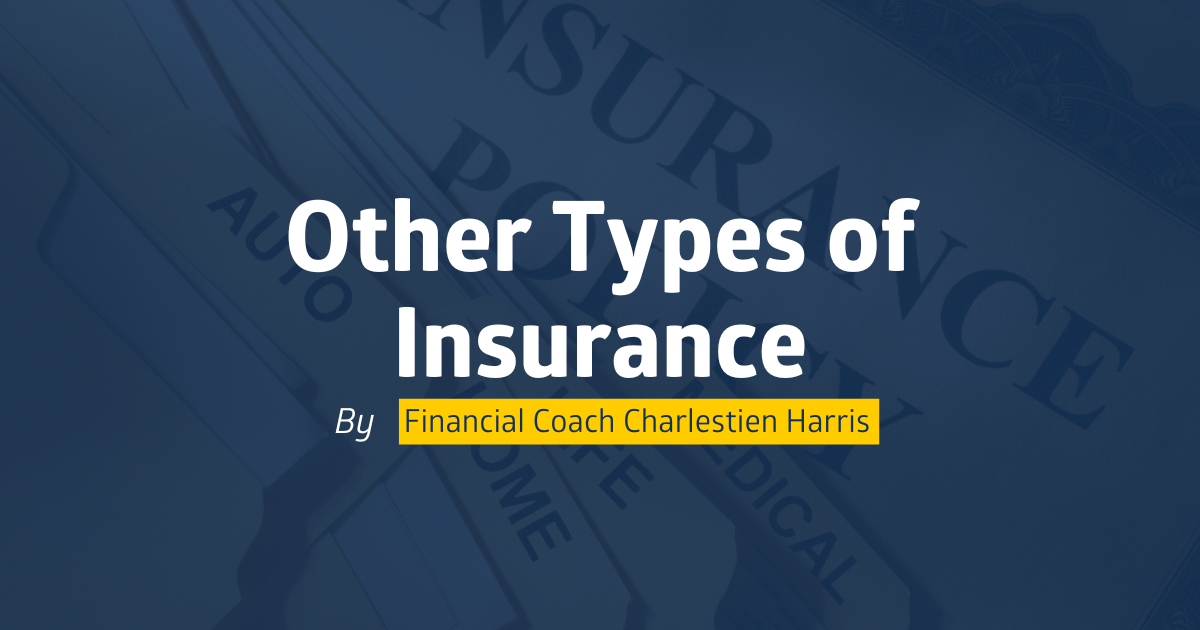By Charlestien Harris
Risk management is a crucial aspect of safeguarding oneself against financial losses. Insurance plays a significant role in effectively managing risk during a financial emergency or unexpected life event. While contemplating the purchase of insurance can be overwhelming, educating yourself about the various types can assist you in selecting the right insurance for yourself, your family, or your business.
Here are a few types that you might not be familiar with, along with their benefits and coverage details.
- Credit Life or Credit Disability Insurance: This is typically a type of life insurance that can help repay a loan in the event of your death before the loan is fully repaid, as per the terms outlined in the account agreement. This coverage is optional, and when purchased, the policy’s cost may be added to the loan’s principal amount. The face value of this insurance equals the loan balance at the time of death or disability. Credit disability insurance often covers all or part of your monthly loan payment if you become disabled. Keep in mind that these types of insurance can be considerably more expensive than term life or regular disability insurance.
- Renters Insurance: Renters insurance is a policy that provides benefits similar to homeowners insurance but does not include coverage for the dwelling or structure, except for small alterations made by the tenant. Its main feature is coverage for your personal belongings against common sources of damage or theft. Personal property includes nearly everything you own inside and outside your rental unit or home. This insurance proves invaluable when your personal belongings are at risk of loss, damage, or theft. Creating a detailed inventory of your possessions is a smart move. In case you need to make a claim, a thorough list of items can help establish their value and streamline the claims process.
- Flood Insurance: Flood insurance is specifically designed to cover property losses resulting from flooding. To assess risk factors for specific properties, insurers often consult topographical maps that identify lowlands, floodplains, and other flood-prone areas. Standard homeowners insurance policies typically do not cover flood events. If you reside in a flood-prone area, check if your community participates in the National Flood Insurance Program (NFIP). If it does, you can obtain affordable flood insurance through the NFIP program, often available through local insurance agents.
- Long-Term Care Insurance: Long-term care insurance is a product that helps cover the costs associated with long-term care. It includes services generally not covered by health insurance, Medicare, or Medicaid. This type of insurance addresses expenses related to long-term healthcare, which may encompass daily activities like dressing, bathing, or eating due to aging or frailty, even if there’s no medical illness. Skilled nursing services can also be part of this coverage, as nursing facilities often do not provide such care.
Insurance serves as a financial tool for managing risk, encompassing both the loss of physical property and the loss of your health and well-being. To ensure your assets and family’s needs are adequately protected, consider creating a list of your existing insurance policies and determining if additional coverage is necessary. Additionally, make sure a trusted family member knows where these policies are kept and who the beneficiaries are. Just like other financial obligations, include a line item in your monthly budget for insurance premiums.
For more information on this and other financial topics, please contact me at Charlestien.Harris@banksouthern.com or call me at 662-624-5776.
Until next week – stay financially fit!
